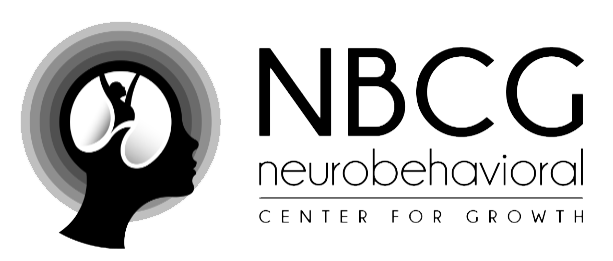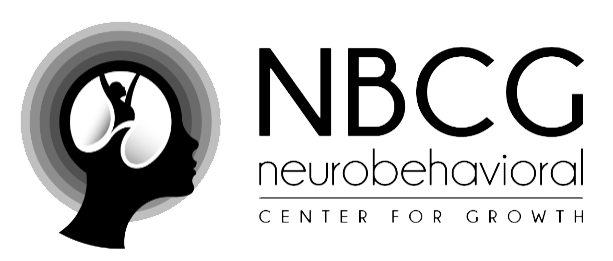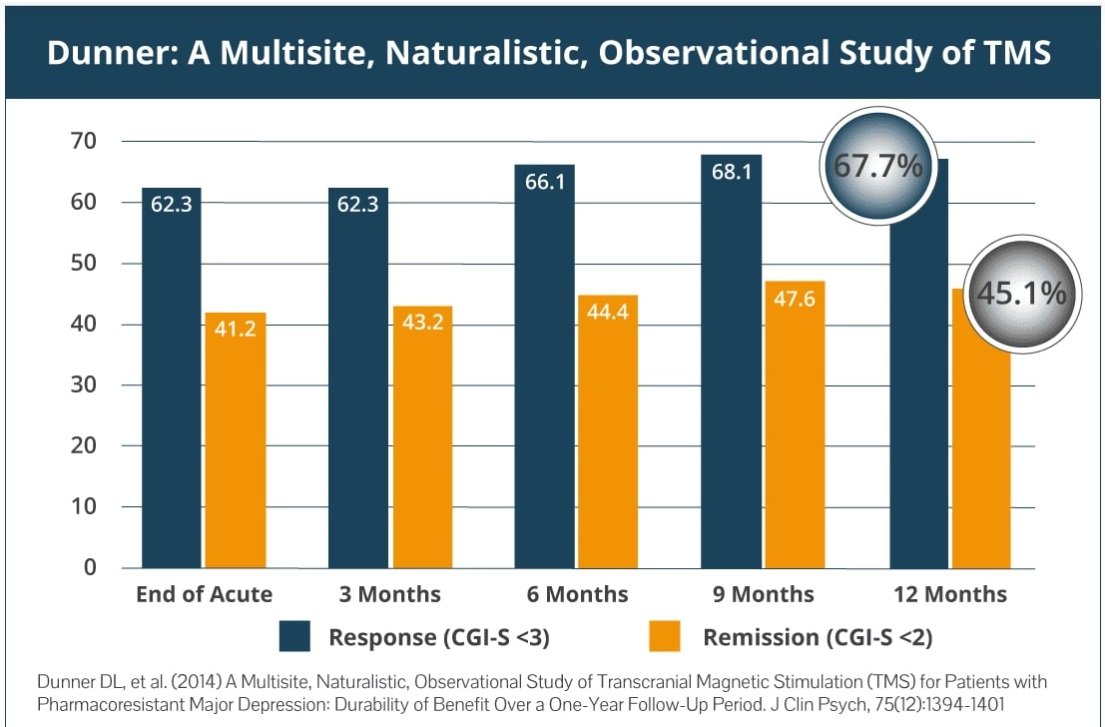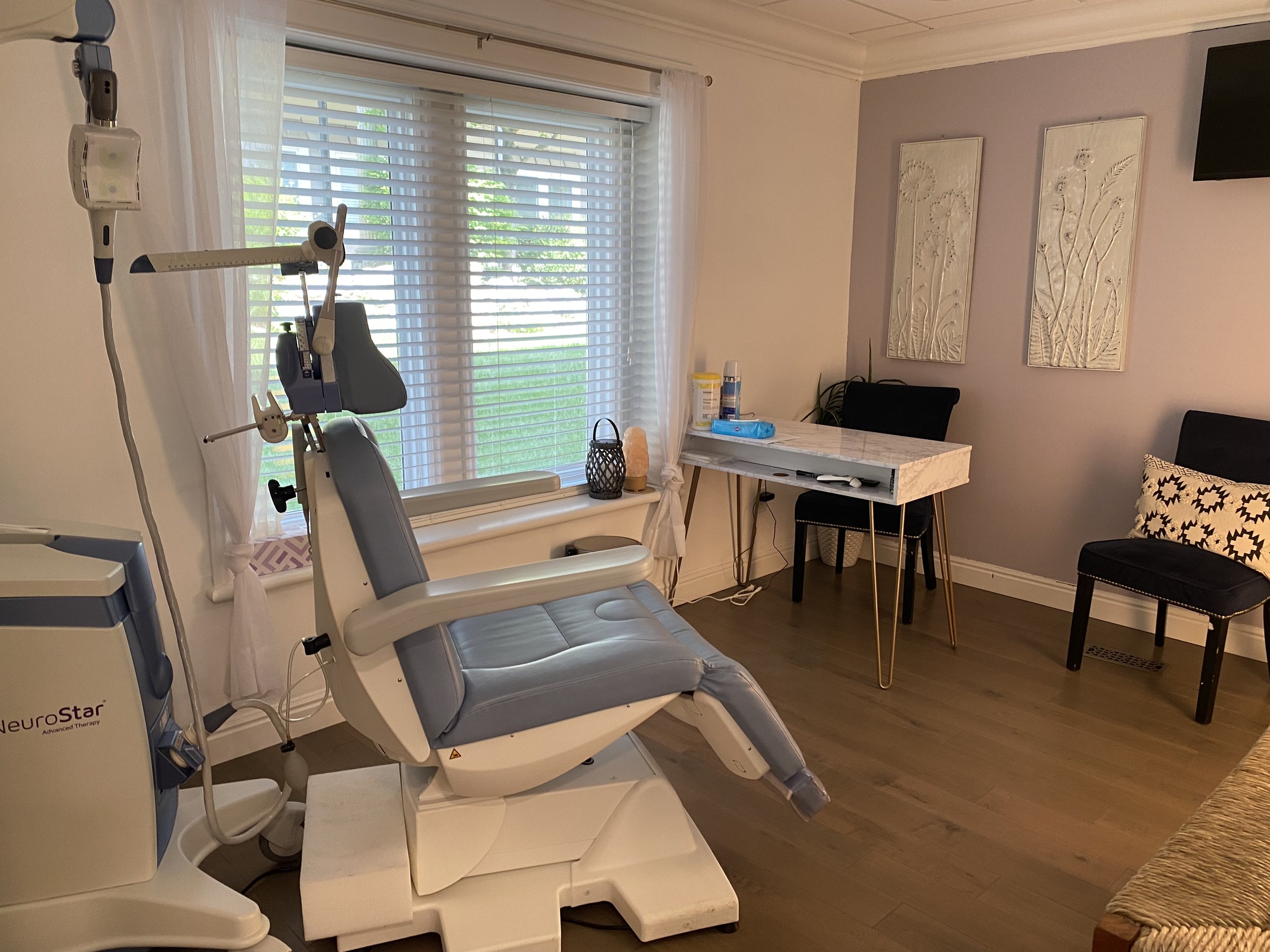
Transcranial Magnetic Stimulation (TMS)
What is NeuroStar TMS?
NeuroStar uses transcranial magnetic stimulation (TMS) to target key areas of the brain that are underactive in people with depression. It is not ECT (electroconvulsive therapy).
While the exact cause of depression is not known, the leading scientific theory is that it is caused by an imbalance of the brain’s neurotransmitters, which are chemical messengers that send signals between brain cells.
During a NeuroStar treatment session, a magnet similar in strength to that used in a magnetic resonance imaging (MRI) machine is used to stimulate nerve cells in the area of the brain thought to control mood. These magnetic pulses may have a positive effect on the brain’s neurotransmitter levels, making long-term remission possible.
Treatment with NeuroStar Advanced Therapy is easy:
Therapy sessions are conducted in your NeuroStar doctor’s office
You can return to normal activities right away
You are awake during treatment
There are no negative effects on memory or sleep
It’s covered by most health insurance plans, including Medicare and Tricare
With more than three million treatments delivered, this novel treatment approach to achieving remission is bringing new hope to people every day.
How NeuroStar® TMS Therapy Works
Before Treatment: You’ll recline comfortably in the treatment chair. A small, curved magnetic coil will be positioned lightly on your head.
During Treatment: NeuroStar delivers focused magnetic stimulation directly to the target areas of the brain. You’ll hear a clicking sound and feel a tapping sensation on your head.
After Treatment NeuroStar Advanced Therapy: Depending on your doctor’s recommendation, each treatment takes between 19 and 37 minutes. You can resume normal activities immediately. Because there are no effects on alertness or memory, you can drive yourself to and from treatment sessions.
In-office treatment: With NeuroStar TMS Therapy typically takes 19-37 minutes and is administered 5 days a week for approximately 4-6 weeks.*
TMS Efficacy
A brighter future is possible.
Safe, effective, and FDA-approved, TMS is an incredibly effective option for individuals 18 and over who suffer from treatment-resistant depression. If you’re feeling a lack of hope with failed treatment attempts, are tired of the side effects of drugs, and just want something that provides sustained relief without stifling your spirit—know that positive, powerful change is absolutely possible with TMS.
Clinical Trials & Academic Studies
Clinical trials and academic studies are provided below-- there are many more
studies and trials not referenced here.
1. Carpenter LL, et al. (2012). Transcranial Magnetic Stimulation (TMS) for Major Depression: A Multisite, Naturalistic, Observational Study of Acute Treatment Outcomes in Clinical Practice. Depression and Anxiety, 29(7):587-596. https://pubmed.ncbi.nlm.nih.gov/22689344/2. George MS, et al. (2010). Daily Left Prefrontal Transcranial Magnetic Stimulation Therapy for Major Depressive Disorder: A Sham-Controlled Randomized Trial. Arch Gen Psychiatry, 67(5):507-516. www.ncbi.nlm.nih.gov/pubmed/204398323. Dunner DL, et al. (2014). A Multisite, Naturalistic, Observational Study of Transcranial Magnetic Stimulation (TMS) for Patients with Pharmacoresistant Major Depressive Disorder: Durability of Benefit Over a 1-Year Follow-Up Period. J Clin Psychiatry. 75(12):1394-1401. www.ncbi.nlm.nih.gov/pubmed/252718714. O’Reardon JP, et al. (2007). Efficacy and Safety of Transcranial Magnetic Stimulation in the Acute Treatment of Major Depression: A Multisite Randomized Controlled Trial. Biol Psychiatry, 62(11):1208-1216. www.ncbi.nlm.nih.gov/pubmed/17573044
Bountiful, Utah and Ogden, Utah Facitilies
“By the end of the TMS treatment, things were better than I could have imagined. After that sixth week, I was so excited that my life was starting to resume.”
— Garret A.
You are not alone.
Depression affects millions of Americans and is the second leading cause of disability.
16 million
affected each year
6.7%
of all adults in the U.S.
More than 26k
deaths from suicide
4 million
patients who can’t take antidepressants
Safe, Effective, and FDA-Approved:
TMS Treatment Offers an Array of Benefits
✓ FDA-cleared
✓ Non-drug
✓ Non-invasive
✓ No side effects of drugs
✓ Not ECT
✓ Long-lasting relief
✓ Widely covered by insurance
✓ Proven to work
Who is TMS For?
TMS treatment is best suited for individuals 18 and over who suffer from treatment-resistant depression. Qualifying for TMS treatment requires the failure of four or more antidepressants.
How does TMS work?
During TMS Therapy, short pules of magnetic fields are used to stimulate the area of the brain that is thought to function abnormally in patients with depression. This produces electric currents in the brain—and these currents activate brain cells that release neurotransmitters like serotonin, norepinephrine, and dopamine. Because depression is thought to be the result of an imbalance of these chemicals in the brain, TMS can restore that balance and relieve depression.
“TMS exceeded my wildest expectations. Almost immediately the world looked bright and new.”
— Tim A.
Bart's Story: From Medication to NeuroStar TMS
After several years of treatment with antidepressant medications, Bart learned about NeuroStar Advanced TMS Therapy. Hear his experience and how he began to look forward to his treatment.
How does TMS work for people with depression?
We can’t wait to bring you sustained hope and happiness.
If you think you’re a right fit for TMS treatment, start here.
TMS for providers
Help your patients reach their full potential with TMS therapy.
Clinical trials have demonstrated the effectiveness of NeuroStar® TMS Therapy in treating patients who have not benefited from prior antidepressant medication. In an independent, randomized, controlled trial funded by the National Institute of Mental Health, 307 patients were treated with the NeuroStar TMS System for 4 to 6 weeks. At the end of their treatments:
Patients who received NeuroStar TMS Therapy were four times more likely to achieve remission compared to patients receiving a sham treatment.
1 in 2 patients experienced significant improvement in their depression symptoms.
1 in 3 patients experienced complete remission.
Patients who received TMS Therapy also experienced a significant improvement in the anxiety and physical symptoms (such as appetite changes, aches and pains, and lack of energy) associated with depression.
TMS FAQs
Is TMS therapy covered by my insurance?
A vast majority of commercial and Medicare plans have recognized the effectiveness of treating depression with TMS Therapy and now cover TMS as part of their plans. See here for a full list of insurance plans that cover TMS.
Is TMS Therapy a good alternative for patients who cannot tolerate the side effects of antidepressant medications?
TMS does not circulate in the blood throughout the body, so it does not have side effects like weight gain, sexual dysfunction, nausea, dry mouth, sedation, etc. The most common side effects reported during clinical trials were headache and scalp discomfort —generally mild to moderate—occurring less frequently after the first week of treatment.
Is TMS Therapy like other alternative therapies that use magnets to treat some illnesses?
No. TMS Therapy involves a unique method of using pulsed magnetic fields for a therapeutic benefit. The intensity of the magnetic field is similar to that of an MRI. These techniques differ radically from the popular use of low intensity, static magnetic fields. Those products deliver weak and undirected static fields that are not capable of activating brain cells. The activation and stimulation of brain cells is a key part of why TMS is so effective.
How long is TMS treatment?
A typical initial course of treatment is about 19-37 minutes daily over 4-6 weeks.
What is Major Depressive Disorder?
Major depressive disorder is a condition which lasts two or more weeks and interferes with an individual’s ability to carry out daily tasks and enjoy activities that previously brought pleasure. This condition affects approximately 16 million American adults, or about 6.7 percent of the U.S. population age 18 and older.
What causes depression?
The exact cause of depression is not known, but leading research in Neuroscience points to an imbalance in the brain’s neurotransmitters as the manifestation of depression. Neurotransmitters are chemical messengers that send signals between brain cells. A person’s genetic make-up and life history may also determine her or his tendency to become depressed.
How do I know if I’m clinically depressed?
If you are experiencing four or more of the below symptoms and suffering from a depressed mood for more than a two-week period, you may want to seek medical help.
Significant weight loss (when not dieting) or weight gain (a change of more than five percent of body weight in a month)
Significant increase or decrease in appetite
Excessive sleepiness or insomnia
Agitation and restlessness
Fatigue or loss of energy nearly every day
Feelings of worthlessness or excessive and inappropriate guilt nearly every day
Diminished ability to think, concentrate, or make decisions
Recurrent thoughts of death or suicide

“Since TMS, my perspective on life has been so positive that I know there is hope.”
— Martha F.










